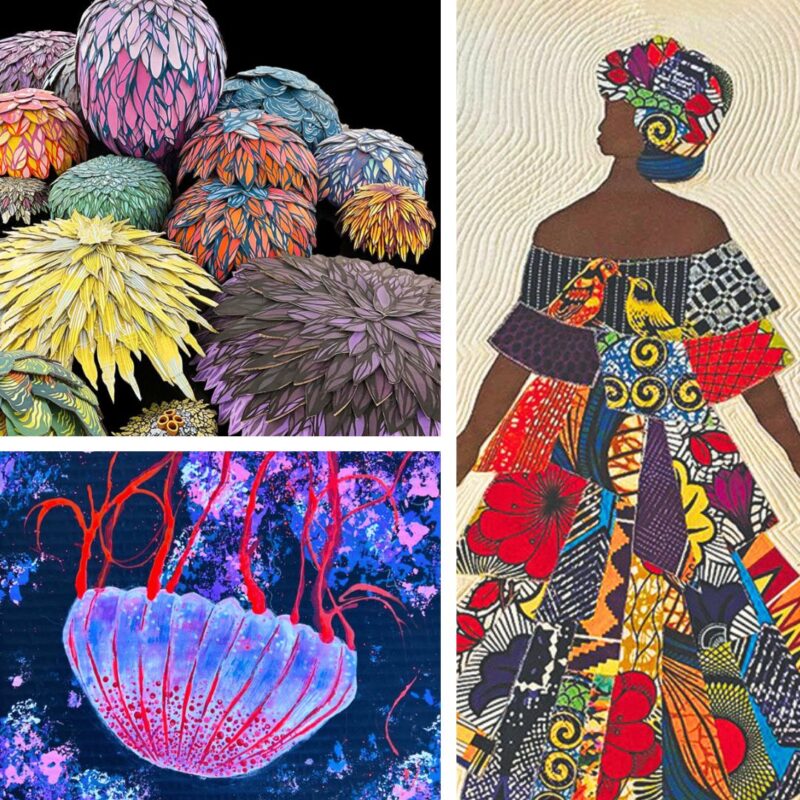
The Richmond Art Center’s new executive director, José R. Rivera, might be the non-profit organization’s most improbable appointment of its 84-year history. The arts education and exhibition center is prominently located at Richmond’s Civic Center Plaza and has four galleries, over 600 members, hundreds of art classes, an operating budget of over $1.5 million and serves thousands of underserved youth and adults in workshops and community outreach presentations. Visibility is RAC’s middle name, it could be assumed.
Read the article as a PDF Link or Online
Even so, asked in an interview about his awareness of the center prior to applying for the position, Rivera said, “Actually, I’ve been living in Albany for 30 years. I had heard there was an arts center in Richmond, but I’m ashamed to say I’d never visited there. It never really came up in partnerships while I was working in Oakland and the Bay Area.”
Rivera comes to RAC with a B.S. in Electrical Engineering and an MBA in Finance from Northeastern University in Boston. His eclectic background includes extensive community arts education and multidisciplinary, intergenerational projects developed in prior directorship positions held at at Lincoln Families in West Oakland; Stagebridge in Oakland, Work2Future Foundation with the City of San Jose; and independent work as a consultant to non-profits, professional theater and film producer, screenwriter and classical pianist.
Jumping onboard to helm the RAC during the critical, slow-moving COVID-19 recovery period, he said the opportunity is challenging, but irresistible. “I used to hear “RAC” and think “painting.” I know now that people come for theater, music and other interdisciplinary art forms. It occurs to me there may be other people like me who don’t know how rich its programs are.”
Among the programs are Arts In Community that brings students to the center and exports curriculum and instructors into the community; annual West Contra Costa County Unified School District Student art shows; annual Art of Living Black exhibits featuring new and established artists of the African diaspora, and special programs related to exhibits of work by emerging or well-known Bay Area artists such as Richard Diebenkorn, Wanxin Zhang, Hung Liu, Ed Rossbach and others.
Able during current pandemic guidelines to offer only online programs, instructor Vida Vazquez wrote in an email that she and other RAC educators adapted quickly. “Personally, video is a medium I had been thinking about for a couple of years and had never tried. This was a jumpstart for me into the format. I actually love making videos, it can be playful, and I love that it’s a resource people can return to again over time.”
Vazquez’s primary objection is the lack of student response, but the longterm payoff is tremendous. Noting that arts budget cuts disproportionately impact children in lower income communities and people of color, she pointed to “tons of research” and said, “The arts can improve student engagement. Access to creating art provides a tremendous source of confidence, culture, and introduces minds of all ages to liberating ways of thinking. A child may be introduced to the idea of a whole career through exposure to art.”
Working to add cultural vitality as a creative entrepreneur in a community-based organization in the current economy she said is “a political act in itself.” On social media platforms, Vazquez channels her emotions and knowledge toward authenticity and justice.
All of which leaves Rivera eager to “put the RAC back on pubic radar.” A fundraising campaign with a $300,000 goal had reached $93,000 as of mid-June. While acknowledging the steep slope he and the center must climb, Rivera has “incredible fantasies” soon to be penciled out with costs and details and practical ideas already in progress. Maintaining safety and the need to generate revenue underscore everything, from videos filmed by drone of local outdoor sculptures in presentations moderated by local artists to conversations with landscape designers about using an outdoor courtyard for a reopening celebration or healing event. “I want to tap into the community to do an exhibit where we can direct the people coming in in one direction so it’s safe and gets the public eye on us.”
Included in both upcoming and future plans is increased outreach to Latinx, African American and Asian communities. “I’m Hispanic and in 30 years, I never heard about RAC’s celebrations that are Hispanic or Latino. It was happening but it wasn’t out there on my radar.” His expertise developing intergenerational programs will also come into play. “Have we partnered with other nonprofits or senior groups that want to use art as therapy? The center doesn’t look like the community where it is. That’s not a secret. We need to do a better job of that and it’s something you don’t solve overnight.”’
Instead, recovery of the magnitude faced by arts organizations worldwide requires mobile, active leadership, deep listening to community, synergistic programming, and “getting everything labeled and disinfected,” according to Rivera. Equity, he added, is respecting everyone and remembering that “I’m just José and my title doesn’t define who I am. I don’t have all the answers. I welcome input, cooperation, knowledge and advice.”
Lou Fancher is a freelance writer.

